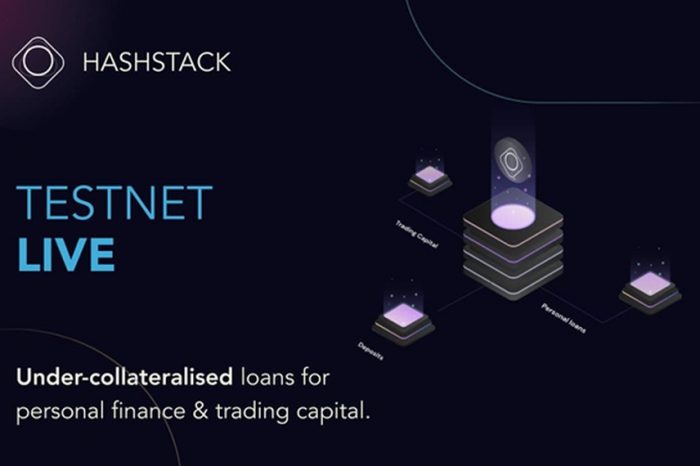Here’s Why Web 3.0 Could Disrupt the Future of the Creative Industry and Data Management Systems

Web 3.0 is slowly taking over the internet, the past few years have seen more people embrace the potential of a decentralized web following the debut of blockchain technology and cryptocurrencies. As it stands, most of the platforms that exist on the internet are built on Web 2.0; this includes social media websites such as Twitter and Facebook as well as centralized applications offering a range of services.
Unlike its predecessor, Web 3.0 changes the narrative through its distributed architecture. This new iteration of the web is based on a decentralized ecosystem, giving users more control over their content and data. In Web 2.0, that is not the case, large corporations have often been accused of violating their clients’ data privacy for monetary benefits. This is possible because the platforms on Web 2.0 are run by a single authority.
Well, thanks to the ever-evolving nature of technology, Web 3.0 has introduced community-driven ecosystems. Clients/users can participate in the governance of a particular ecosystem and reap profits from their content or personal data. Simply put, Web 3.0 is a decentralized version of the web whose focus is to bring power back to the users. A trend that resonates with most people across the world given its value proposition in data privacy and security.
While Web 2.0 still dominates the internet and app development, it could soon be disrupted by decentralized innovations. Web 3.0 is coming up as a force to reckon with, featuring notable use cases in the crypto industry and other sectors such as gaming and data storage. That said, let’s take a deep dive into some of the Web 3.0 innovations that are making a significant impact.
1. Chingari
Chingari is India’s version of TikTok, the application was launched in 2018 and has since grown to over 32 million active users. Despite starting as a centralized ecosystem, Chingari is now moving into the Web 3.0 community; they recently launched a native token $GARI on the Solana blockchain, enabling creators to have full control of their content. Contrary to the pioneer application, Chingari’s DApp on Solana will be governed through Decentralized Autonomous Organization (DAO).
Following the move, Chingari has received massive support from the Web 3.0 community across the globe. The project raised $19 million from Alameda Research, Galaxy Digital, and Kraken as part of its bootstrapping efforts to build on Web 3.0. Furthermore, $GARI has been listed on six major crypto exchanges, including OKEx, FTX, Huobi, MEXC Global, KuCoin, and Gate.io. Chingari’s CEO Sumit Ghosh has previously commented on their shift to Web 3.0, noting that, “GARI will enable 30 million monthly active users of the Chingari short video app to get on-chain. For the first time in the history of blockchain, an app will onboard millions of users on-chain from the day of its launch.”
2. Infinity
Infinity is an NFT marketplace built on the fundamentals of Web 3.0, it is a community-driven ecosystem where users can discover, buy, and sell other digital collectibles. The platform is a fork of the Opensea code; however, it features advanced functionalities, bringing a new experience to NFT enthusiasts. One of Infinity’s outstanding features is its compatibility with programmable NFTs.
With Infinity, NFT owners are not limited to the mainstream digital collectibles whose value is purely dependent on their exclusivity. Programmable NFTs are more flexible, allowing creators to customize them according to their preferences. For instance, one can include adjustable settings that enable NFTs to change or adapt over time based on specific triggers. This increases their value proposition and solves the existing liquidity challenges.
Being a Web 3.0 innovation, the Infinity ecosystem is run through a DAO. This project is set to launch a native token dubbed $NFT, whose roles include the facilitation of on-chain governance, fee discounts, community incentives, and access to exclusive NFT airdrops. With Infinity’s marketplace barely a year old, the platform has recorded close to $8 million in transaction volumes from over 2,000 NFT purchases/sales.
3. QuickNode
QuickNode is a blockchain-as-a-service (Baas) solution designed to simplify the deployment of blockchain applications. The platform features advanced developer tools that enable users to build and scale DApps on Web 3.0. Notably, the QuickNode BaaS solution is based on a multi-chain infrastructure, currently integrated with the Solana and Ethereum blockchain ecosystems.
With NFTs on the rise, this BaaS platform has also introduced an NFT API to ease navigation in the digital collectibles market. Though a growing ecosystem, it is hard for prospects to locate NFTs given the fragmented nature of blockchain networks. QuickNode simplifies this process through its API which enables users to perform various functions, including specific NFT searches based on one’s preferences.
As far as achievements go, QuickNode has risen the ranks quite fast since graduating from the Y-Combinator Spring class of 2021. The project’s seed funding round attracted prominent names from traditional finance and crypto; they include Michael Arrington (founder of TechCrunch), Alexis Ohanian (founder of Reddit), Anthony Pompliano, and Softbank’s Opportunity Fund. QuickNode is also behind Twitter’s recently launched NFT profile picture function (currently on Twitter blue).
4. Authtrail
Data management is often a big challenge given the amount of information that companies have to record. Authtrail is a Web 3.0 innovation designed to bridge the gap between centralized databases and blockchain technology. Powered by the Moonbeam blockchain, Authtrail features developer tools that enable the integration of existing data management systems with distributed ledgers. In doing so, the project seeks to introduce a verifiable and immutable data recording system.
While businesses may be tempted to stick to the old model where data can be manipulated, history has shown that it could lead to legal issues. Big corporations such as Volkswagen, Coca-cola, and Toshiba are some of the companies that have found themselves at odds with the authorities due to data manipulation. A decentralized data management system such as Authtrail could save these companies millions of dollars while increasing the integrity of their financial reports.
5. Creaton
Creaton is another Web 3.0 innovation with a focus on the burgeoning social media market. The platform enables creators to monetize their content through NFT technology. Ideally, Creaton eliminates the barrier that exists between creators and their fans; this Web 3.0 ecosystem allows creatives to mint NFTs that can be accessed directly by fans. The NFTs minted on Creaton are encrypted but can be decrypted and viewed by a fan once they subscribe to a particular creator’s content.
Furthermore, Creaton features a fluid subscription payment model. Fans do not have to pay for monthly subscriptions to view content; instead, they can leverage Creaton’s decentralized payment channel for real-time experiences. Like most Web 3.0 innovations, Creaton is governed through a DAO meaning that there is no single authority that controls the content or interactions within the platform. Stakeholders (creators and fans) have full autonomy of control. This value proposition has attracted strategic investments from NuCypher, ExNetwork, and ZBS Capital.
Conclusion
Web 3.0 may just be at its development stages but the potential is far bigger than most people imagine. Going by the rate at which individuals are becoming aware of its value proposition, the next few years will be marked by a paradigm shift to decentralized ecosystems. Some of the major trends to watch include NFTs, the metaverse, and decentralized data management services.

